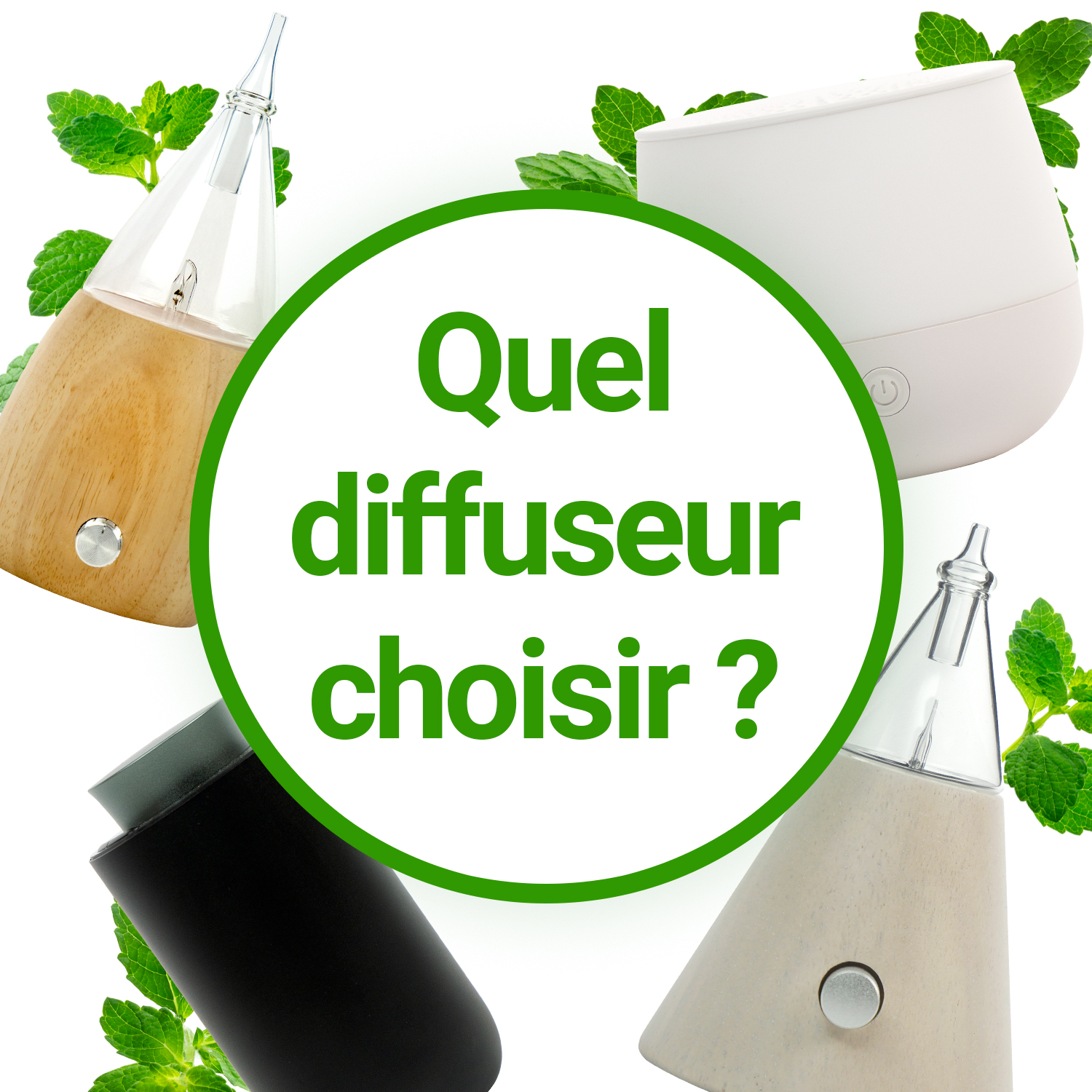Broadcast technology is the first choice to make. If you don't want to be disappointed, put this criterion before the visual aspect of the Discover Aloe

Choosing your essential oil diffuser is not easy. The criteria are numerous: diffusion technology, size, price, surface area to be diffused, light effect or not, nomadic or not, design, timer, etc. That's why we've designed the guide below, so you can choose your diffuser accurately and quickly!
This article was updated on 03/10/20233 major broadcast technologies
How much should you pay for a diffuser?
The answer is not easy to give! Indeed, 2 very important factors will significantly impact the price: the diffusion technology and the materials used. But here are some orders of magnitude.
- For a nebulizer, count between 45 and €92.00. Below, distrust (techno is complex, hard to produce good quality cheaper), above, you are buying an art object, not distribution (that said, why not...).
- For a mister, count between 40 and €69.00. Watch out for the low prices on misters! The simplicity of technology has enabled the marketing of 10 misters, some of which are clearly designed to last 1 month.
- For a broadcaster in mild heat, between 20 and €34.50.
What surface area does my diffuser cover?
To simply diffuse an olfactory atmosphere
- For a 100 m² room: nebulization diffusers
- For a 50 m² room: misting diffusers
- For a 20 m² room: gentle heat diffusers
- For a room of less than 10 m²: ventilation diffusers
To diffuse with an effective therapeutic effect
- For a 50 m² room: nebulization diffuser
- For a 20 m² room: misting diffuser
- For a 10 m² room: gentle heat diffuser
- For a room of less than 10 m²: diffuser by ventilation
How can you be sure of the quality of a diffuser?
Diffusers have enjoyed recent success, and are quite easy to manufacture. All production is therefore done in China, and on the web as in stores, the best rub shoulders the worst. Nothing will replace the trust you can have in a particular seller, but if none are so lucky, here are some criteria that can help "feel" the quality of a diffuser.
- Of course, the price is a decisive element. Beware of cheap misters. Vigilance on Amazon in particular, which highlights low prices without worrying about the longevity of the products.
- Unfortunately, origin cannot be a criterion since all of the diffusers are produced in China.
- We advise you to favor aromatherapy brands already renowned for their essential oils: they will be careful not to endanger their brand image for an aromatic diffuser...
- Vigilance also regarding streamers with too many features (bluetooth, several essential oils, alarm clock, etc.): making a diffuser that diffuses well for a good price is already quite a challenge and manufacturers who try to do everything often neglect the diffusion itself.
- Spare parts available for sale ? This is a good test of the seller's experience in the products he sells: if he sells spare parts (glassware, nozzles, blotters, remote controls), it is because he knows his products and the returns well. customers linked to the product. It’s a safe bet that products that are too fragile have already been exfiltrated from the range.
- And of course if you are on the internet, the opinions of other customers.
Pebbles, sprays, incense burners: good idea for diffusing?
Scent diffusers with stems: meh
Perfume burners: no!
Essential oil sprays: yes
Diffusion rollers and passive diffusers: no
We tell you about it in video


Was this article helpful to you?
Average grade: 4.8 ( 1738 votes)
Bibliography
Work : de la Charie, T. (2019). Treat yourself with essential oils. Why and how does it work? Editions du Rocher.
Related articles
GUIDE Which essential oils should I safely put in my diffuser?
GUIDE How to use and maintain your essential oil diffuser?
GUIDE Using an essential oil diffuser to humidify the air: good idea?
GUIDE Which essential oil diffusers are absolutely silent?
GUIDE What are the guarantees for my essential oil diffuser?


